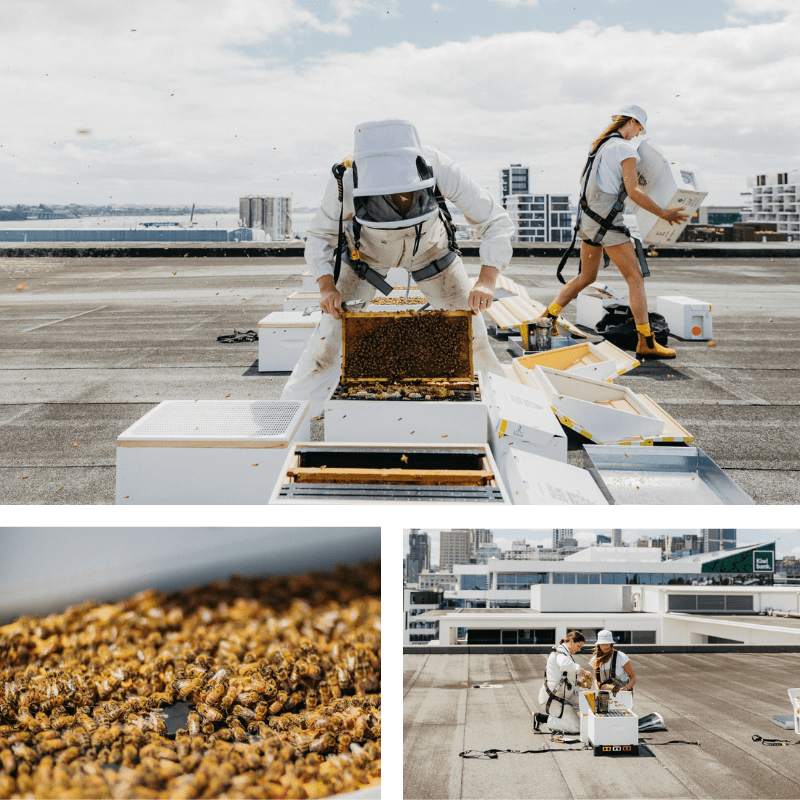HARBOUR GROUNDS RESCUE BEES
Last year, Air New Zealand saw a record number of flights take off from their offices in downtown Auckland. Whilst their fleet was waiting for the world to reopen, five beehives were installed on their rooftop.
Each hive is home to over 50,000 honeybees.
Since 2010, Jessie and Luke from ‘Bees Up Top’ have been rescuing bees and re-homing them. “Every spring and summer, bees swarm. These swarms can be alarming. We step in before the exterminator is called and relocate them to our home by the beach,” says Jessie.
“This summer has been particularly busy, and we have re-homed hundreds of swarms. Every swarm saved means more bees in our environment, pollinating our plants, flowers, trees, and vegetables and, in return, making delicious honey.”
Why are bees so important to our ecosystem?
Bees play a crucial role in our ecosystem. They pollinate one-third of our food, but they are facing many challenges. A recent survey by the Ministry for Primary Industries found that nearly 110,000 bee colonies were lost during the Winter of 2021, this represents over 5% of all living colonies in the country. Bees are battling a parasitic mite that attacks and feeds on adult bees, bacterial infection, loss of habitat, and pesticides. Fortunately, people like Jessie and Luke are helping to redress this balance and preserve our bee populations.
“Once we rescue the bees we treat them against the two most common threats, Varroa mite infestation and monitor the bacteria American Foulbrood. Once treated and healthy, the bees are ready to be re-homed on Auckland’s rooftops,” says Jessie.
Are the bees happy in their new high-rise residence?
“Urban areas are great places for bees. Just look around you. There are parks, mature trees, manicured flower beds, Pohutukawa trees as well as beautifully tended backyards, vegetable patches, and balcony gardens. In fact, our urban bees make three times more honey than their sisters in a rural environment,” explains Jessie.
This year, the team harvested over seven kilos from each of the Air New Zealand hives.
And it is delicious.
“The bees love the Pohutukawa flowers that blossom just before harvesting. So, the Harbour Grounds honey is a clear, light golden colour infused with the tree’s perfume,” says Jessie.
Look out for the specially labelled jars which will shortly be appearing in your office kitchens and break-out areas.
“And don’t worry. We left more than enough honey in the hives to keep our bees happy and healthy over the Winter.”
What is happening in our hives now?
The hives are quietening down.
Over the summer the Queen has been laying up to 2,000 eggs a day. These have been tended by worker bees who have also been busy pollinating our flora and making honey. In winter, the Queen lays much fewer eggs, and the worker’s jobs shift to ensure she stays warm and well so she can recolonise the hive in the spring.






